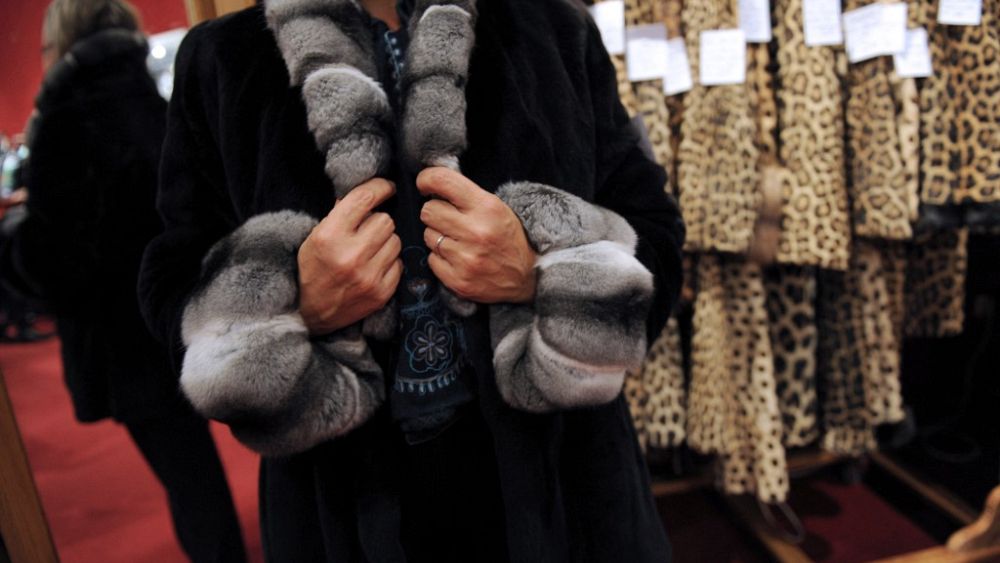The European Parliament is currently considering a petition calling for a ban on fur. While this petition is good news for animal welfare, some are concerned about the economic consequences, with the EU being one of the main producers and sellers of fur.
The European citizens’ initiative “Fur Free Europe” calls forinbanning the farming and sale of fur throughout the European Union.
It has collected more than 1.5 million signatures in 18 Member States and will be presented to the European Parliament on Thursday by the Committees on the Internal Market and Consumer Protection (IMCO) and Agriculture and Rural Development.
Representatives of the fur industry are dismayed that they were not consulted on this matter.
“We are extremely disappointed that a debate on the future of the sector is taking place without any balance”says Mark Oaten, director general of the International Fur Federation, to Euronews.
A near-total fur ban in the EU would close thousands of farms and force many clothing manufacturers to opt for fur-free or faux fur collections.
Although the petition is positive for animal welfare, some are concerned about its possible economic repercussions, given that the EU has an important place in the global fur market. Are these fears founded?
How big is the European fur industry?
The European Union is the world’s second largest producer of fur, behind China.
In 2021, EU fur exports were worth €107.8 million, according to several animal protection organizations.
The sector represents around 100,000 jobs, divided between breeding, production and sale of fur products.
But fur production in the EU is already in sharp decline.
To date, 14 member states have banned fur farming and many others have put in place strict laws to ensure animal welfare, effectively slowing down fur production.
“What I would say to animal welfare advocates is that we absolutely respect their right to object to fur, but they must respect the rights of consumers and breeders to purchase fur and to be able to breed”says Mark Oaten. “It’s about protecting people’s livelihoods. It’s about choice.”
Is the industry doomed to disappear?
The latest figures indicate a rather pessimistic future for the industry: in just two years, fur production has been reduced by more than half, after having been in decline for around ten years.
According to the Fur Free Alliance, mink fur production represented 18 million pelts in 2020 in the European Union, compared to 7.5 million last year. The same goes for fox fur, with 700,000 pelts produced in 2022, compared to 1.2 million in 2020.
The drop in demand is attributed to the awareness campaign by animal protection groups, as well as the effect of the COVID-19 pandemic which has increased wariness over the transmission of animal diseases. animal to man.
Denmark, a major European producer of mink fur, has decided to cull around 15 million animals to prevent the transmission of COVID-19 variants.
Animal rights activists can rest assured that Europe’s fur industry is not the only one in decline.
China, the world’s largest fur producer, and Canada, whose fur production is rooted in the country’s traditions, have also seen their industries contract rapidly in recent years.
After the fur ban petition was introduced on Thursday, members of the European Parliament are expected to debate the ban on October 19, taking into account both the consequences for the European fur industry and animal welfare .


